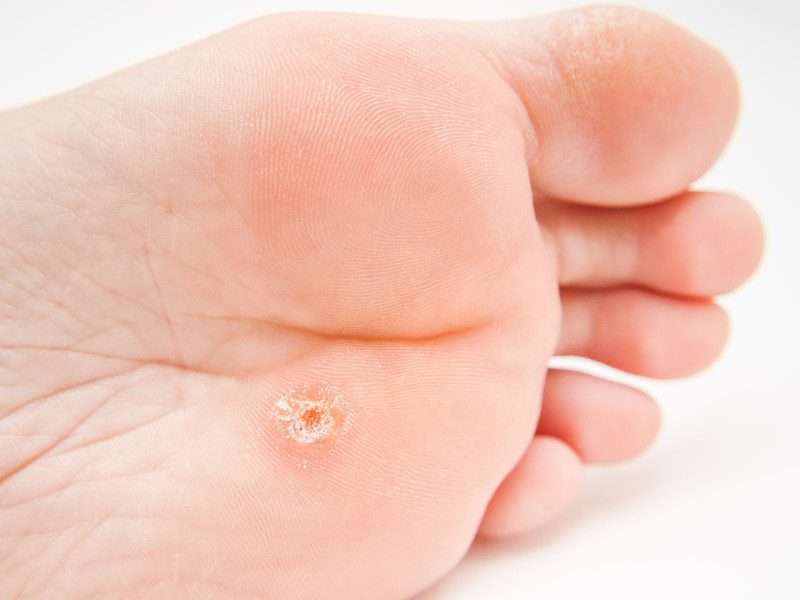Both are associated with the human papillomavirus (HPV), but the common wart and plantar wart appear in different locations.
The first is more likely to occur in visible places, while the second is more concealed and usually grows beneath the foot’s sole.
But are there any real differences between these two types of warts aside from their location? And if so, are they treated in the same way?
To answer this, we offer a brief but detailed overview of common warts and plantar warts.
How often do common and plantar warts occur
The virus that causes the appearance of warts is contagious.
However, in order to spread and multiply, it requires a lesion.
Therefore, it is not surprising for common warts that appear on the hands, elbows and knees, to be the most widespread.
While less frequent, plantar warts can often affect children and adolescents, especially those who frequent public swimming pools.
Warts with very different appearances
Though it is rarely painful, the common wart is quite unsightly to the eye.
It can be recognized by the following features:
- It feels rough to the touch.
- It is either a similar color to the skin or more grayish.
- It is usually singular.
- Its size can vary, but it is usually no more than a few millimeters in diameter.
The plantar wart, on the other hand, may occur in two forms: Myrmecia and Mosaic Wart.
Myrmecia is a singular plantar wart that has the following characteristics:
- It occurs alone.
- It is relatively deep.
- It is surrounded by a ring of horn.
- It has small black dots (blood vessels).
- It causes pain when walking.
- It can sometimes bleed.
As the name suggests, the mosaic plantar wart is not unique and appears as several warts.
You can distinguish it by these features:
- It develops on a rather superficial layer of the skin.
- It spreads over a large area.
- There is little to no pain.
Are common warts and plantar warts dangerous?
It is commonly accepted that the wart in itself does not pose any threat.
However, if it meets certain criteria, it could require the help of a professional:
- The wart is resistant to home treatments and often returns.
- Redness occurs.
- The wart spreads to other areas of the body.
- In the case of a plantar wart, it spreads under the toenails.
It is also a good idea to contact a podiatrist if you are worried about infecting your loved ones or if you wish to rule out the possibility of a malignant tumor (although this situation is rare).
Complications associated with common and plantar warts
Because of their location, complications associated with a plantar wart are usually more problematic than those stemming from a common wart.
The dangers related to the plantar wart are mainly due to the possibility of resulting in an open wound that can be exposed to a wide range of bacteria.
If this is the case, a number of consequent pathologies can be observed:
- Athlete’s foot;
- Diabetic foot sores;
- A painful ulcer;
- A plantar abscess.
Of course, the occurrence of these pathologies is very rare, but some people are still more prone to them:
- People with diabetes;
- Elderly people;
- People who suffer from excessive sweating or dry skin.
Can we treat a common wart in the same way as a plantar wart?
Generally, both common warts and plantar warts can be treated at home.
Otherwise, for recurring plantar warts, the following treatments are possible in a podiatry clinic:
- Bleomycin injection;
- Laser treatment;
- Minor surgery;
- Nitrogen treatment;
- Canthacur treatment.
A plantar wart does not go away? Consult a podiatrist!
While the common wart is easy to spot, that’s not always the case with a plantar wart.
It is thus important that you regularly check the soles of your feet, especially if you visit a public swimming pool.
If a persistent plantar wart appears, you should contact your podiatrist.

